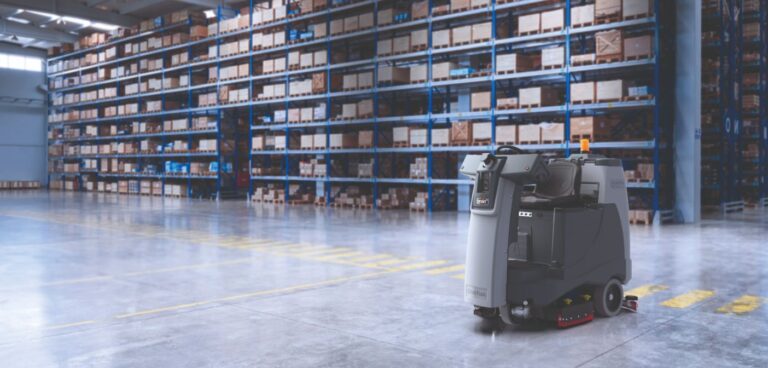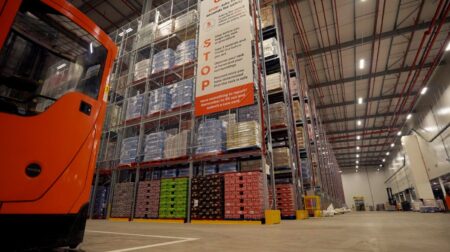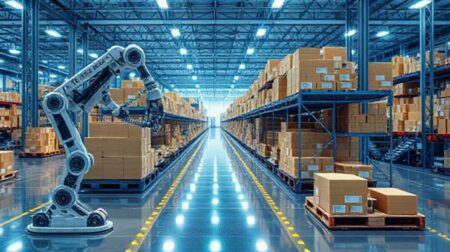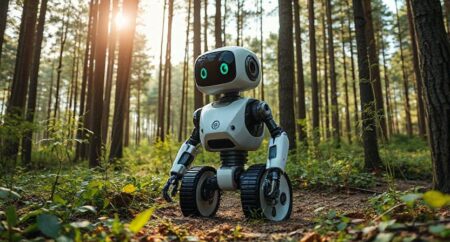Industrial cleaning robots are automating routine, dangerous and dirty work for safety and efficiency and, as Robotics & Innovation discovers, can be deployed for less investment than you might think…
Cleaning goes hand-in-hand with health and safety and has become more important than ever in recent years.
However, with the global pandemic in the rear-view mirror for many countries, businesses are recovering but nevertheless looking ahead to an uncertain future. New technologies, though, are arriving to ease the transition. Chief among these has been intelligent robots, specifically those equipped with reporting and analytics capabilities.
“Facilities, warehouses and retail stores have all seen significant and rapid changes in a relatively short amount of time,” suggests Michel Spruijt, senior vice president, international business at Brain Corp. “The figures are undeniable: the International Federation of Robotics reports that there are now on average 126 robots per 10,000 employees in the manufacturing industries – nearly double the number from five years ago.”
Robotics were steadily advancing into facilities before 2020, but the sudden drive for heightened cleanliness and workforce support accelerated automation adoption. A beneficial side effect of this shift has been the growth in usable data to inform improved facilities management.
“With change comes adaptation, and no-one has had to adapt more radically to this overhaul than warehouse managers,” Spruijt continues. “Those in charge now have more technology at their disposal than was recently the case, which means that they are now working with an unprecedented amount of data. But this shouldn’t be cause for concern; the data boom brought on by automation presents an opportunity for those who know how to harness it.”
Teamwork makes the dream work
Owing to endemic staff shortages, the demand for social distancing and a heightened need for cleanliness, businesses have deployed robots at breakneck speed, enabling workers to focus on higher value tasks while their robot co-workers – or cobots – successfully take on repetitive or hazardous roles. “Human staff remain essential in effective robot deployments,” Spruijt adds. “Staff oversee, maintain and direct machines, ensuring that machines are applied intelligently within the context of a given business. Brain Corp’s autonomous cleaning robots, for example, need a human user to ‘teach’ the machine its routes before it operates autonomously.”
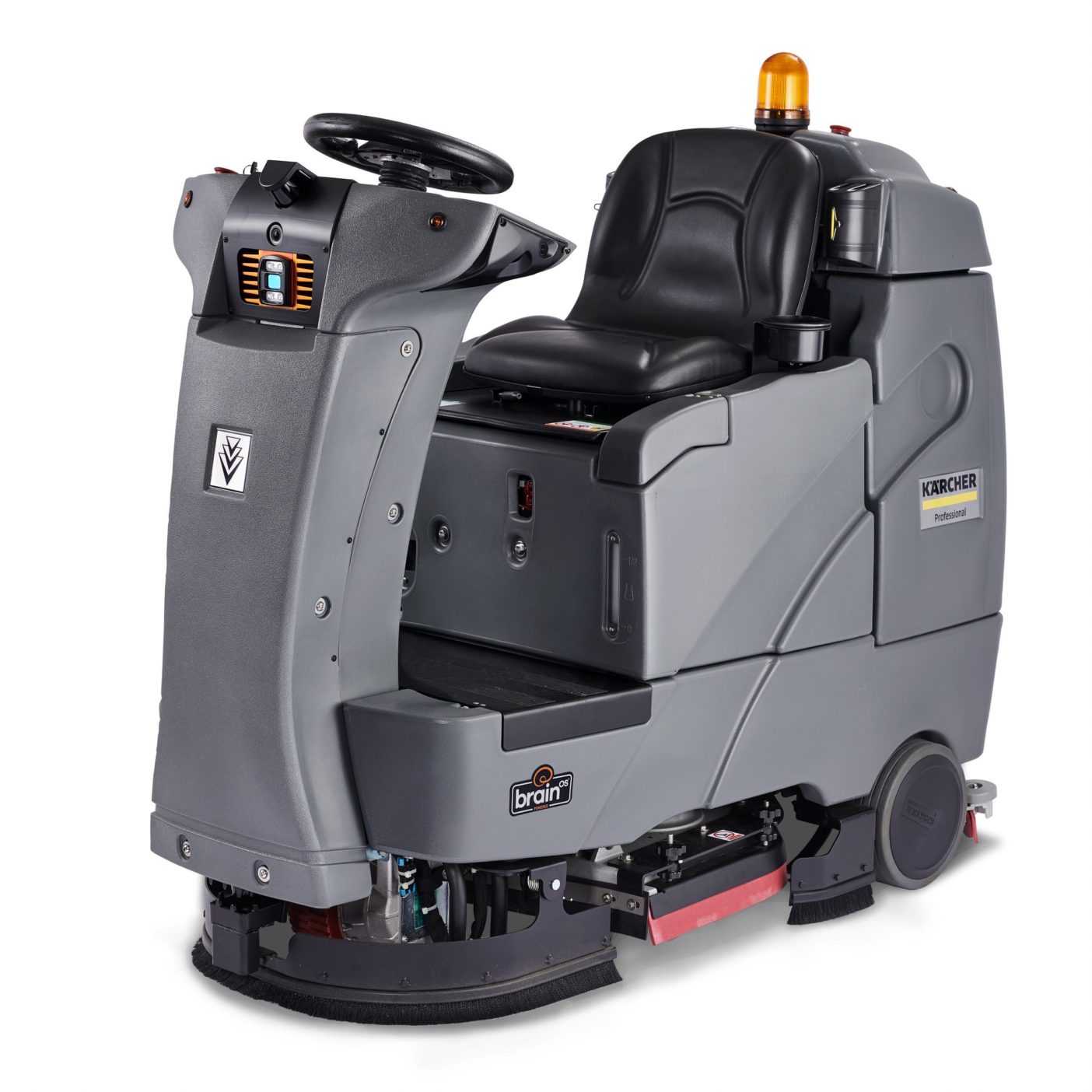
“Human workers are also needed in the uncommon event of a machine encountering an obstacle which it cannot find its way around. Owing to new and improved user interfaces, the setting-up and training of machines is easily taken care of by non-technical staff, who can activate robots without the need for extra infrastructure requirements or extensive training. This synergy between robots and workers is one obvious reason why automation has flourished,” says Spruijt.
Understandably, robotics have been sought out for their capability to make operations more efficient, which consequently gives staff back time in their day. However, the upshot of more automated operations goes beyond efficiency gains. Robots are now producing more information than ever. As a result, warehouse managers have an unprecedented view of their operations and can therefore optimise their workplace systems like never before.
“Automation strategies can involve multiple robotic machines – floor scrubbers, vacuums, incoming delivery and inventory analytics – all working in unison across a given environment,” Spruijt notes. “Robots can all be controlled by a centralised cloud-connected AI platform. With multiple units feeding data into a central ‘brain’, it is possible to use data as a key management resource.”
Data hogs
Modern autonomous robots also generate performance data while carrying out their tasks, which can be visualised and analysed and used to inform better decision-making. Managers can track real-time data created by machines and use that to optimise operations throughout a facility. “When deployed sensitively and intelligently, synergetic technology has the power to advance facility operations and not only improve the safety and experience of customers but also of the life blood of every organisation, its people.”
Traditionally, cleaning has always been a back-of-house function, not to be seen, and an undervalued process. Given everything that has happened in the past few years, though, this has changed dramatically. People want to see cleaning taking place, they want proof that the places they are visiting are both aesthetically and clinically clean. The public and your staff expect more from cleaning now – they want it to be front and centre rather than behind the scenes. “Comfort is gained by seeing an autonomous machine in operation alongside a cleaning operative – providing complete proof of a clean and healthy environment,” suggests Julie Kitchener, head of customer service and marketing at ICE.
“In these still uncertain times, it’s clear that facilities service providers must achieve more, both in terms of productivity and quality, without compromising financial budgets,” Kitchener says. “Therefore, we believe that investment in automated cleaning is not just pioneering, but essential for future cleaning.”
The company launched ICE Co-Botics during the first wave of the pandemic in 2020. The equipment has been designed to integrate into cleaning team operations, picking up the manual and repetitive tasks, which will then allow operators to focus on hygiene and sanitising activities to promote cleaner and safer environments. “It’s not about replacing people – it’s about embracing technology to deliver higher cleaning standards, infection control and ‘proof of clean’,” explains Kitchener. “These machines are as close to human activity as anything available. They are extremely intelligent and can be fully operated, controlled, and managed by the cleaning teams on site.”
As the demand for Co-Botics continues to gather pace and more facilities realise the benefits that autonomous cleaning can bring, one key point to remember is collaboration. The key to successfully utilising Co-Botics is to collaborate with the cleaning operatives to ensure that the machines become part of the cleaning team and are not seen as a threat or as a separate function. “This requires fully involving the front-line operators so that they see the real value of the machines as collaborating with them, not replacing them. We have also seen the adoption of Co-Botics in numerous distribution centres throughout the UK and Europe,” Kitchener reports. “These facilities use automation extensively, so have been quick to embrace cobotic cleaning and have seen huge benefits, including improved cleaning standards and real return on investment opportunities.”
Costly affair?
“That’s why future thinking logistics leaders are increasingly turning to automation,” says Jonathan Stacey, director of sales and marketing at Crescent Industrial. But are robotic floor cleaners an expensive vanity for cash-rich businesses looking to dazzle customers with ‘innovation’, or are they a truly market-ready method of warehouse cleaning with genuine cost-saving benefits? The UK’s leading logistics providers are finding the latter, according to Stacey.
“So far, UK deployment of the Sweep XL robot floor cleaner has automated cleaning and brought a plethora of positive results to warehouse providers across the country. Not only is labour resource freed for higher value tasks, but consistent cleaning schedules deliver a healthier workplace and automated updates provide transparent reporting on what was cleaned and when. There are many more benefits, but you get the drift.”
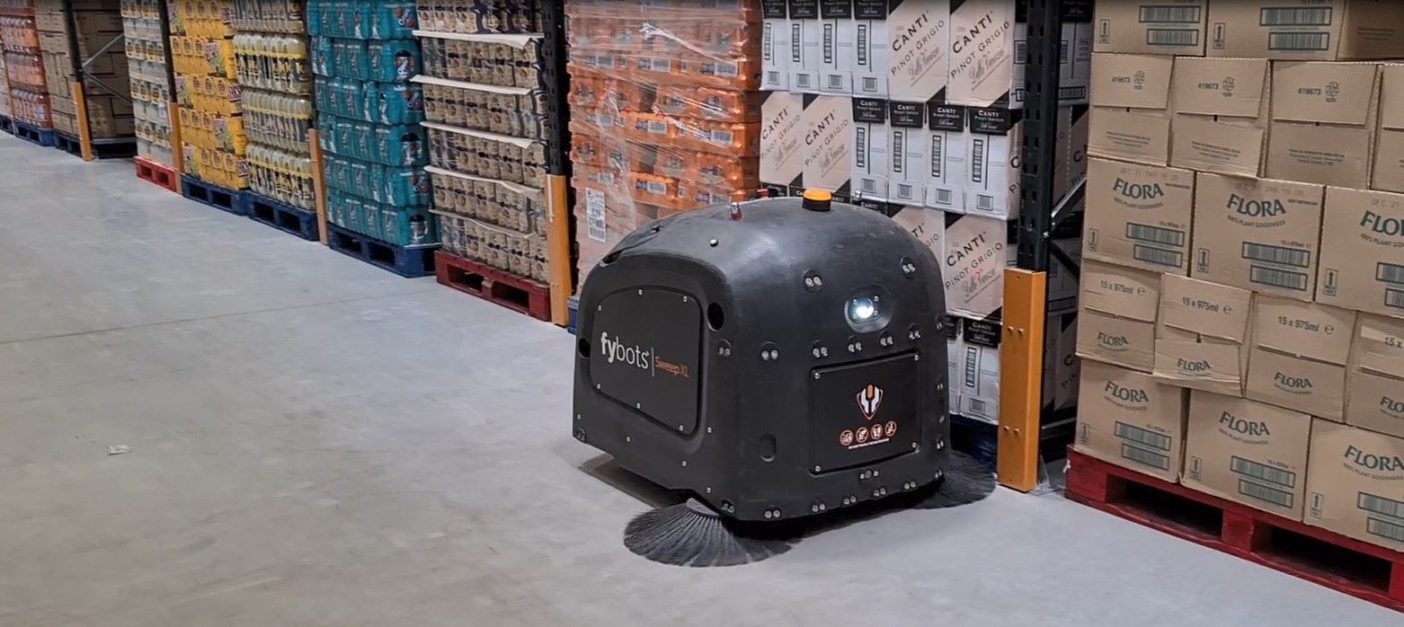
“Clearly, automated cleaning has many benefits, but there remains the opinion that the price tag could be out of reach for most operations. Contrary to popular belief, the Sweep XL robot delivers a healthy saving compared to the cost of traditional cleaning in most large warehouse applications,” explains Stacey. “When comparing the costs of conventional cleaning (equipment rental, service support and labour rates) coupled with mediocre outcomes to a fully automated cleaning system, conventional cleaning quickly looks outdated, expensive and inefficient.”
Some managers may be concerned that their operations are already too hectic, with forklifts, LLOPs, PPTs, pedestrians and a myriad of other moving things meaning adding automation might not be appropriate for your warehouse. Stacey advises that you shouldn’t be too quick to dismiss the power of today’s automation. “The Sweep XL has a super-smart system of navigation including a vast array of lidars, sensors and ultrasonic ‘eyes’,” he says. “This means the Sweep XL delivers cleaning in changing, dynamic spaces while avoiding obstacles and moving objects. The robot will even clean inside pallet bays when they’re empty.”
Robotic reality
Perhaps automation is closer to a cost-saving reality than many may have first assumed. “Being truly autonomous – meaning the robot self-deploys, self-empties and self-recharges, the Sweep XL is helping deliver safer and healthier workplaces, leaving you free to focus on higher value tasks,” says Stacey. “Furthermore, companies are finding the Sweep XL a perfect low-risk way of introducing automation to the workplace, while demonstrating the value of true innovation to customers who have ever-growing expectations.”
Automated solutions are of course at the premium end of the industry offering, but there are a host of solutions that are beneficial to your business and your bottom line.
“A lot of businesses struggle to find the right equipment for their facility, which is why we offer a bespoke process of advice and on-site demonstrations to help customers understand their own needs better and help them find the right machine for their business environment,” says Jamie Harris, head of industrial at Tennant UK. “Every space is different, from warehouse flooring to new-build facilities, office and carpeted areas within the same space and external areas, which is where the benefit of working with Tennant comes to light.
“Being able to use a single supplier for all your cleaning machines, service requirements and expert advice ultimately reduces the cost to your business,” concludes Harris. “Right now, along with a huge focus on cleaning, customers are looking to manage their budgets more effectively, which is why we have also adapted our rental offering to help our customers as best we can.”
Tennant offers innovative cleaning machines in every category, from vacuum cleaners to sweeper-scrubbers, but also offers automated solutions, the T380AMR, T7AMR and T16AMR industrial robotic floor scrubbers. These cleaning machines have just become even cleaner, with the introduction of lithium-ion technology. Brain Corp and manufacturing partner Tennant have deployed more than 5,400 robotic scrubbers together.
“We’re very excited about the introduction of lithium-ion batteries to the fleet of Tennant AMR machines powered by BrainOS,” says Jeff Heller, senior director of product, Brain Corp. “Simply put, the more time robotic machines are running, the more productivity gains our customers can realise. With BrainOS as the only platform enabling multi-purpose robotic solutions, including Tennant’s Inventory Scan, it’s now even more critical for machines to run longer so they can be utilised more frequently while employees focus on other value-added assignments.”
Committing to sustainability
Using autonomous cleaning equipment also demonstrates real commitment
to your environmental, social and governance strategy and goals – something we should all take extremely seriously. “The machines recycle water during operation, resulting in a 70% reduction in water used,” reveals ICE’s Julie Kitchener. “Additionally, having the machine operating autonomously reduces the likelihood of operator damage, which reduces carbon footprint relating to engineer visits. The machines can also be managed remotely, which further reduces the need for engineers to visit site.”

